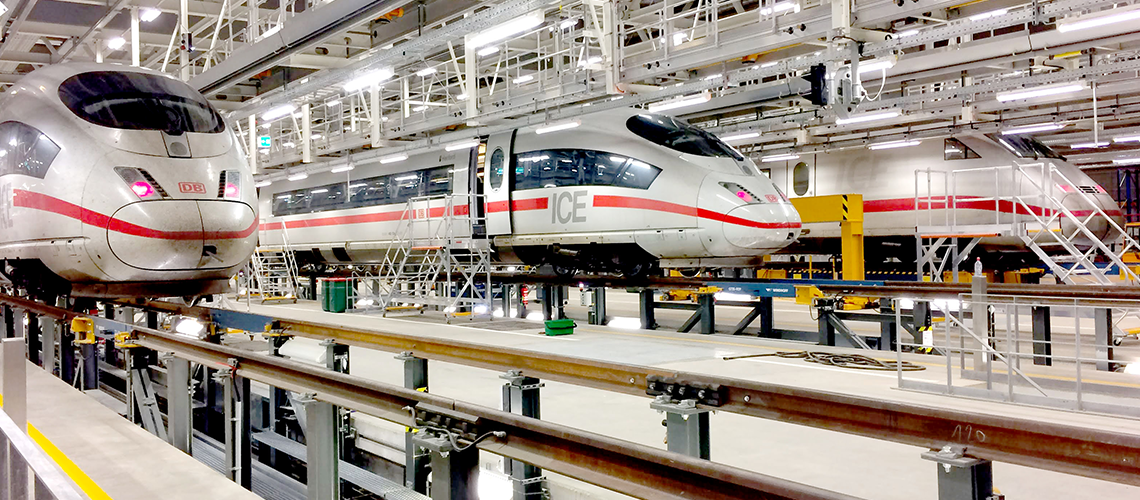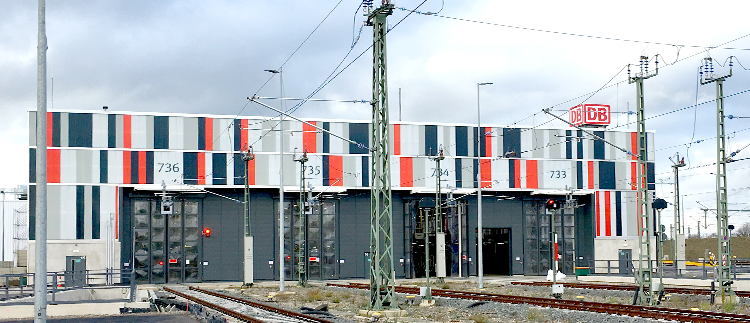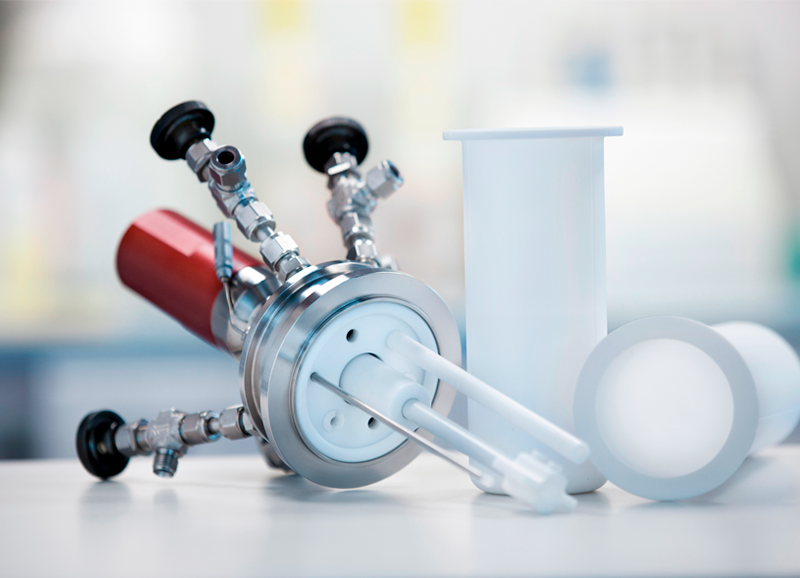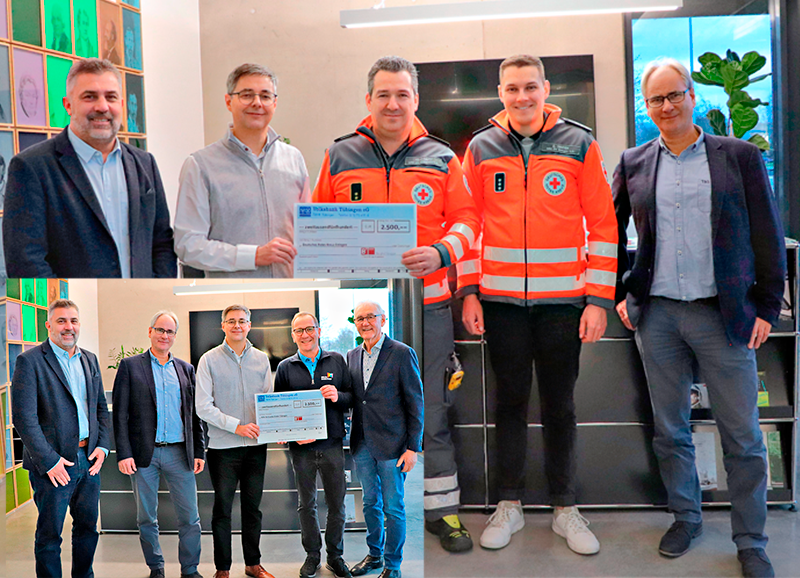After almost two years of construction time, Deutsche Bahn recently opened Europe’s largest and most modern maintenance centre in Cologne’s Nippes quarter. Deutsche Bahn now services up to 17 high-speed trains, including the new ICE 4, here on a daily basis. The central control system forms the heart and nerve centre of this impressive facility. Berghof Process Management, the Railway Control Management specialist within the Berghof Group, won the tender with its Management Computer called BFR, which is based on the IBIS control system developed by Berghof. A real milestone for the experienced Berghof experts: Never before have they installed and networked so many sensors, backup systems and interfaces as in this project.
Even the spatial dimensions of the new facility far and away surpass all previous projects realised by Berghof Process Management: It extends to a length of more than five kilometres, the main hall covering an area of 450 x 50 metres. Added to this are dispatching tracks and many other outdoor facilities.
The Management Computer called BFR, which is based on Berghof’s IBIS system, makes things much easier for the dispatchers of Deutsche Bahn. This is because the modular maintenance, info and safety system – known by its German acronym IBIS – optimises maintenance and service work on trains by utilising all available technology, track and personnel resources as ideally as possible. At the same time, the system precisely complies with all safety regulations of the Federal Railway Authority (EBA). Decentralised distributed systems can therefore be monitored centrally via one control system without extensive labour.
By coupling with the interlocking technology systems and info systems of Deutsche Bahn, the team in Cologne only needs to work with a single control system thanks to the BFR from Berghof – both in the hall areas and on the entire facility grounds as well as on the upstream rail network of DB Netz AG. This gives schedulers a clear overview of when what train is arriving and, above all, departing again.
Further challenge: Besides greater automation of the workflows, the control system is also designed to ensure the highest possible level of occupational safety on all tracks. The system is therefore programmed so that all instances have to agree before a train can start moving – from the dispatcher and signalman through to the foreman. Employees log in by transponder for a definite activity via operating data logging terminals located at the hall tracks. The track is then automatically barred for any train movement. Besides primary operating elements, Berghof also installed an additional fall-back level so as to maintain emergency operation even in the event that the main control fails completely.
The spatial dimensions and these special requirements meant the Berghof experts had to network huge numbers of interfaces and data with each other. In total, they routed over 60 kilometres of cables in the new maintenance centre Cologne Nippes, having installed eight info boards as well as eight warning systems with 24 flashing lights and eight horns for the traffic light and signal systems. To determine the train position precisely to ten metres, over 300 sensors are also utilised on the tracks.
Jürgen Schütze, Head of Test and System Technology at Berghof Process Management, explains the way the control system functions: „A train previously dispatched is logged and the BFR checks whether everything is ready for safe arrival at the corresponding track. The arrival is then automated: If a sensor registers a train movement, the system warns the employees in the hall via warning lights and horns. The gate opens, a train enters, the gate closes, and the system automatically switches the warning signals off again after the train has come to a rest.“
Managed by Jürgen Schütze, the implementation of the diverse, individual hardware and software solutions at Berghof ran perfectly according to plan – thanks to the company having utilised state-of-the-art fieldbus systems for capturing the sensors and coupling the interface partners.



